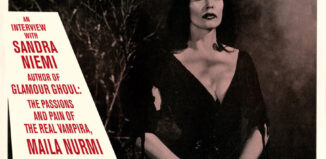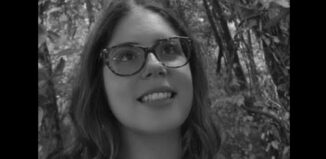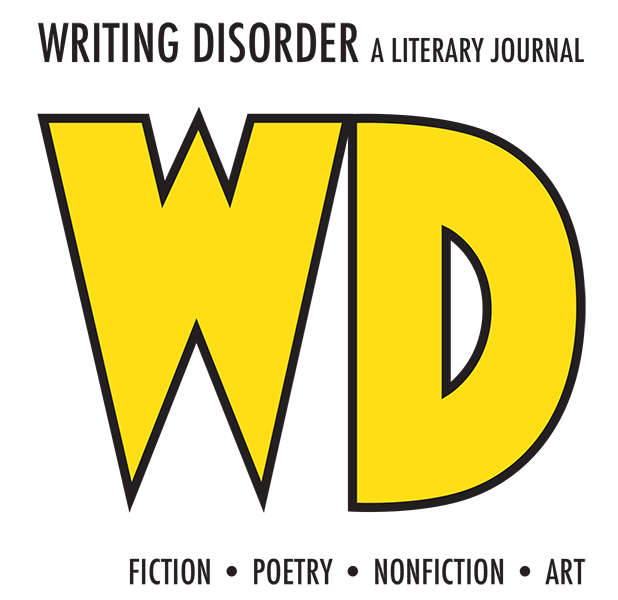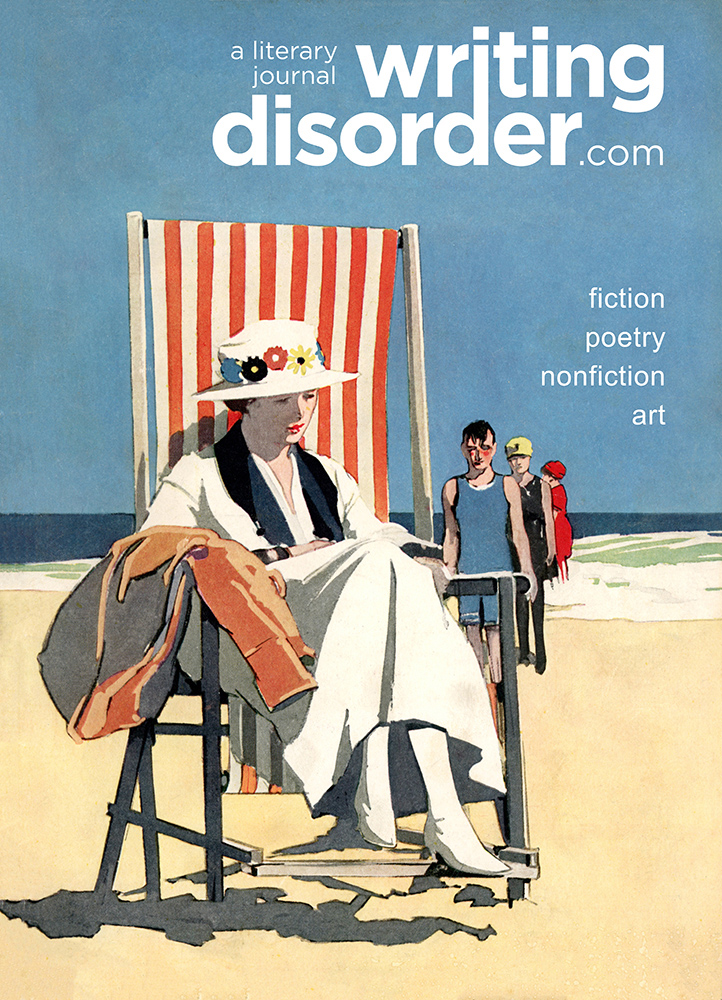Sportin’ Life
by Graeme Hunter
When I say that I’m a Rangers fan, I don’t mean the New York Rangers of the National Hockey League. Nor do I mean the Texas Rangers of Major League Baseball or Queen’s Park Rangers of the English Football League. No, I am a fan of Rangers Football Club of the Scottish Premier League.
My father was a Rangers man, and his father before him. Like me, they had no choice in the matter. Rangers were the Protestant team in Glasgow, just as Celtic were the Catholic team, and my grandfather, father and I were all brought up in that most Protestant of Protestant denominations, the Presbyterian Church of Scotland. We got to choose whether we would practice that religion: I became an atheist in my teens; Dad lost his faith much later in life. We also got to choose whether or not we participated in such ancillary activities as joining the Orange Lodge, becoming Freemasons and commemorating King Billy’s victory at the Battle of the Boyne. But whatever our choices, at the end of the day we were still Proddies. And in Glasgow, “Proddy” meant “Rangers supporter”.
Celtic Football Club was somewhat more ecumenical than Rangers. In my days as an active Rangers supporter – I’m talking about the 1970s – Celtic had several Protestant players. But in 1972 Rangers F.C. celebrated its centenary having never fielded a Catholic. How did the club manage to maintain its religious purity? For native-born players, a simple enquiry about the candidate’s schooling would suffice. Scotland has both non-denominational and Catholic schools, with the latter easily identifiable by having names such as ‘Lourdes’, ‘Holyrood’, ‘Notre Dame’ and ‘St. Joseph’s’. In the case of foreign-born players, weeding out the Catholics was a bit trickier. So Rangers erred on the safe side by restricting its scouting efforts to reliably Protestant Scandinavia.
I started going to Ibrox Park, where Rangers played, when I was about twelve years old. At that time my family lived in Greenfield, in the East End of Glasgow; Ibrox is across the city, on the South Side. So my friend Kenny Cairns and I took the Blue Train into the City Centre and travelled by subway to Copland Road station, in the shadow of the stadium. A bit later, we also started attending away games. From The Drum, a Rangers pub in nearby Shettleston (every pub in Glasgow was either a Rangers pub or a Celtic pub), a chartered bus took us to Falkirk or Dundee or Edinburgh, with a couple of stops along the way so that supporters of drinking age could relieve themselves of the beer they’d drunk before we left.
As I said, my father was a Rangers man, and after retiring he worked as a steward at Ibrox. But the only game I remember going to with him was the most infamous match in the history of the club. On January 2, 1971, Rangers played Celtic at Ibrox Park. When the visiting team scored the first goal of the game in the ninetieth minute, my dad, brother John and I left the stadium. We thereby missing Rangers’ tying goal in injury time. We also missed getting trampled to death, the fate that befell 66 supporters – men, boys and one young woman – on the very same stairway we had descended a few minutes earlier. Until 1989, when 96 people died at Hillsborough Stadium in Sheffield, the Ibrox Disaster represented the largest loss of life at a British football ground.
This near-death experience didn’t stop me from going to Rangers games. When I was working on a Ph.D. at the University of Glasgow and living in the West End of the city, I went to Ibrox with my friend Ken Brown and his dad. We’d take the Govan Ferry across the River Clyde and walk to the stadium from there. After the game, we’d have a couple of pints at The Overflow. A Rangers pub, of course.
Those Saturday afternoon trips to Ibrox Park ended when I completed my Ph.D. and moved to California for a postdoctoral fellowship at Stanford University. My supervisor was Merton Bernfield, but I worked most closely with his research associate, Shib Banerjee. Before I found my own apartment, I occupied the spare bedroom of Shib’s house in Menlo Park. He’d recently split up with his wife, and was too gregarious to live on his own. On January 20th, 1980, Shib and I went to a student pub on El Camino Real, just outside the university gates. There I watched my first National Football League game: Super Bowl XIV, in which Pittsburgh Steelers defeated Los Angeles Rams.
San Francisco’s N.F.L. team, the 49ers, played at Candlestick Park, about a half hour drive from Palo Alto. But I didn’t go to any of their games, or those of the Oakland Raiders, whose stadium was just across the Bay. The only live football I saw during my fellowship involved Stanford Cardinals of the National Collegiate Athletic Association. Football wasn’t a big deal at Stanford; the Board of Trustees valued Nobel Prizes more highly than Heisman Trophies. But the Big Game against the University of California at Berkeley (another brainy school) was always fiercely contested.
The first Cardinals’ game I saw was against San Jose State University. On the first play from scrimmage, the San Jose quarterback dropped back to pass and was promptly flattened by about four Stanford defensive linesmen, who then high-fived and back-slapped each other with hands the size of dinner plates. “Hey, we just beat up a guy half our size! Good on us!”
The only other home game I remember from the Cardinals’ 1980 season was against the University of Southern California. And all I recall about that game was the half-time show. First, the U.S.C. Trojans Marching Band came onto the field in their plumed helmets, scarlet cloaks and plastic Bronze Age armor, playing their fight song while executing precision manoeuvers. When the Trojans left the field, out swarmed the groovy Stanford Band, its members casually dressed and wandering at random across the playing surface. It was Bach versus jazz.
The Cardinals ended the season with a mediocre 6-5 record. And, more importantly, they lost the Big Game. But that 1980 team did have three players who went on to have distinguished careers in the National Football League: wide receiver Ken Margerum, running back Darrin Nelson and, most notably, quarterback John Elway.
I planned on spending three years at Stanford, and then, having completed a B.T.A. (Been To America), find a real job at a university in the U.K. But my research project was a bust, Mert went on sabbatical to the East Coast and my fellowship renewal was turned down. By December of 1980, I’d Been To America for a mere eleven months and my time at Stanford was already over. I found another postdoctoral fellowship, at the University of Toronto, but that wouldn’t start until February. In the meantime, I went back to Glasgow.
I had to fly via New York, so I stopped off there for a couple of days and visited an old university classmate, John Logan, who was doing a postdoc at Stony Brook. He took me to my first in-person N.F.L. game, the New York Jets against the New Orleans Saints. Unfortunately those were two of the worst teams in the league, and my California winter coat wasn’t a match for a snowy day at Shea Stadium.
Back in Scotland, my dad picked me up at the airport (Prestwick, in those days).
“Good to see you, son!” he said. “How long can you stay this time?”
“Two months,” I replied.
“Two months!”
In the meantime I signed on the dole and paid rent to my parents. My mum, at least, was glad to have me around. (I think.)
The U. of T. fellowship was for two years, so I was back on track to spend three years in North America. But, as my national bard observed, the best-laid plans of mice and men gang aft agley. I’d hardly set foot in Canada when I fell in love with a young woman who, for reasons that will hopefully become clear, I’ll refer to by a nom de plume. “Ruth” had been/still was/never had been (take your pick) married to “John”, who played linebacker with the N.F.L.’s Houston Oilers/played linebacker but not with the Oilers/didn’t play linebacker/didn’t exist (again, your choice). If I’d been more interested in the N.F.L. in those days, I’d probably have suspected a lot earlier that there was no “John”, at least in the form that “Ruth” presented “him”. But in fact I was only interested enough to have a favorite player: number 72 of the Dallas Cowboys, Ed “Too Tall” Jones. (The quotation marks in this case referring to the fact that “Too Tall” was Ed Jones’ nickname, not to cast doubt about him being called that, or to dispute the fact that the 6’ 9” Mr. Jones was, in fact, tall).
By the time my on-again, off-again relationship with “Ruth” finally ended, I’d missed my target date for repatriation. Still planning on returning to the U.K., I applied (unsuccessfully) for positions at University College London and the Rowett Research Institute in Aberdeen. But then I fell in love again, with Francine (real name), and decided to make my career in Canada instead.
An English couple I knew in Toronto made the opposite decision, returning to Britain on the grounds that the beer in Canada was too cold and you couldn’t get a decent pork pie. But before leaving, they took me to the University of Toronto’s Varsity Field for a soccer game between Toronto Blizzard and Chicago Sting. This was the second leg of a home-and-away final to decide the 1984 champion of the North American Soccer League. The Sting had won 2-1 in Chicago; now they won 3-2 in Toronto. The N.A.S.L. went bust before another season could start, and thus the Varsity Field game was the last one ever played in that league.
Francine and I attended a couple of Toronto Argonauts’ games, but the Canadian Football League was not for me: too big a field, too many players, too much pre-snap activity. It wasn’t Francine’s cup of tea, either, but then she wasn’t a sports fan. Nonetheless, we did go to quite a lot of baseball games. In those days the Blue Jays still played at open-air Exhibition Stadium, so Francine could at least work on her tan. I got quite heavily into baseball, to the point of reading box scores in The Globe and Mail every morning. I think I liked the fact that baseball, like chess, has almost endless permutations. If there’s one man out and a runner on first base in the fifth inning of a 2-2 game, with a 3-1 count on a right-handed power hitter and a left-handed line-drive hitter on deck, should a left-handed pitcher: (a) intentionally walk the batter, putting the go-ahead run on base; (b) try to pop the batter up with an inside fastball; or (c) throw a change-up in the hope of getting a ground-ball double-play? How does the calculation change if the runner is a good base-stealer, or if the wind is blowing out, or if the centre-fielder is nursing a leg injury? When, after many years of watching baseball, I finally knew the answers to questions like those, I lost all interest in the game.
In 1988 I was offered, and accepted, a faculty position at the University of Alberta. Francine and I got married and moved to Edmonton. We’d been dating for four years, and now wanted to start a family as soon as possible. But first we had a decision to make: what, if any, religious indoctrination would our (hypothetical) children receive? Francine was a practicing Catholic; I am, as noted above, a born-again atheist. So I offered her a deal. She could have our (hypothetical) children baptized and confirmed, first-communioned and first-confessioned; she could take them to Catholic churches on Saturday or Sunday, and send them to Catholic schools on all the other days of the week. In return, all I asked was that I be allowed to bring them up as Rangers supporters. It was a good deal, and she accepted it.
But she had a question: “What are we going to say if the children ask why you don’t come to church with us?”
“I’ll tell them I have a different religion,” I replied. “N.F.L. football.”
Despite shivering through a game between the woeful New York Jets and the even more woeful New Orleans Saints, I had become a fan of the National Football League. I could claim it was because of my unrequited man-crush on Too-Tall Jones. I could claim it was because the former Stanford Cardinal John Elway, subsequently of the Denver Broncos, won two Super Bowls (XXXII and XXXIII, if anyone’s counting in Roman numerals). But really it was because football is the only sport in which men with beer guts get to be “athletes”.
What I don’t like about N.F.L. football – hate, actually – is all the commercials. The game has umpteen unavoidable stoppages: half-time, the end of the first and third quarters, six timeouts and four challenges, injury timeouts and video reviews. So there’s no excuse for inserting additional commercial breaks between (say) a kick returner fielding the ball and the offence running out onto the field. But the television companies do “step away” on such occasions. As a result, an N.F.L. telecast consists of 60 minutes (or less) of actual football and two hours of commercials for “best-in-class” pickup trucks, fast-food restaurants, investment advisors and upcoming TV shows. (In Canada, at least we’re spared the political attack ads.)
Fortunately I came up with a cunning way of watching football while preserving my sanity. I program the game to record, then start watching the recording about an hour after kickoff. This means I can fast-forward through all the commercial breaks and the inane, testosterone-fueled half-time panel, and still arrive at the end of the game at the same time as the chumps who watched it live.
But every February there’s an N.F.L. game that I do watch live. It’s the one that decides which team will be world champion of a sport played only in the United States. The Super Bowl has truck commercials that I haven’t seen before; a pregame show with heart-warming stories of good deeds performed by N.F.L. players when they’re not beating up their domestic partners in a fit of roid-rage; a flypast by U.S. Air Force killing machines; grown men learning how to toss a coin; the solemn moment when the stadium announcer says: “And now, ladies and gentlemen, please rise, remove your MAGA hats and honor America by singing the national anthem”; a country “artist” warbling: “O’er the land of the free-EEEEE! And the home of the bra-a-a-a-a-ave”; and a half-time show featuring superannuated pop stars and frenzied choreography. (Why not invite the U.S.C. Trojans Marching Band instead? The N.F.L. wouldn’t have to worry about “wardrobe malfunctions” with those clean-cut young people.)
Long story short, the University of Alberta didn’t work out for me. Edmonton didn’t work out for Francine, who described herself as a “hot-blooded Italian” and wasn’t a fan of cold weather. So after three Prairie winters, we and our Catholic-baptized daughter moved to London, where I had found a new job at the University of Western Ontario.
By then, soccer hadn’t been part of my life for a long time, but I started to watch the occasional game from Italy’s Serie A on the Telelatino channel. As a result, I soon learned Italian terms like “fuorigioco” (offside), “tiro in porta” (shot on goal) and “cartellino rosso” (red card). Sometime in the mid-1990s, English Premier League games became available on The Sports Network, which, like TLN, was part of our cable package. I got into the habit of doing my ironing on Saturday mornings, with one eye on the shirt, one eye on the game.
In Scotland, soccer had gone into a long decline from the glory days of the 1960s and 1970s, when Rangers won the European Cup-Winners’ Cup, another Glasgow club won the European Cup, and the national team held its own against England. In 2012, Rangers Football Club suffered the ignominy of going bankrupt, and the even greater ignominy of being cast into the outer darkness of Scottish football. Now the former Cup-Winners’ Cup winners weren’t playing Celtic – they were lining up against the part-timers of Elgin City and Annan Athletic in the Scottish Third (actually fourth) Division.
But three successive promotions got Rangers back up to the Premier League. And today, midway through the 2020-21 season, my team is cantering to its first top-division championship in a decade. Rangers even qualified for the knock-out stage of the Europa League. (Which, back in my Ibrox-going days, was called the Fair Cities’ Cup. Rangers played in this competition not because Glasgow was a fair city, but because it was a city with a fair.)
When my children were young, I didn’t get back to Scotland much. But on one visit I showed my Uncle Gibby photographs of Francine and the kids. Gibby was the husband of my (paternal) Aunt Agnes, and very much an Orangeman (possibly also a Mason). One of the photographs I showed him was of my middle child standing in a schoolyard. Behind her was a sign saying ‘St. Marguerite d’Youville Catholic School’.
“What’s this, then?” Gibby said. “You’re sending your kids to Catholic school?”
Fortunately I was able to extricate myself from an awkward situation. “Yes, Uncle Gibby. But they’re all Rangers supporters.”
BIO

Graeme Hunter is a gentleman writer living in London, Canada. His essays have been published in Queen’s Quarterly, Riddle Fence and Talking Soup. See www.graemehunter.ca.


















